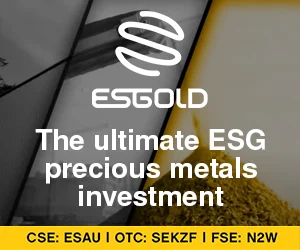Platinum Group Metals Ltd. is making significant strides in the development of its Waterberg Project, a large-scale platinum group metals (PGM) mine located in the heart of South Africa’s Bushveld Complex. This project is not just another mining venture; it represents a pivotal opportunity in the global PGM market, especially as demand for these metals continues to surge. The recent independent definitive feasibility study, released in September 2024, highlights the promising economic potential of this underground mining operation.
Economic Potential and Production Forecast
The Waterberg Project is projected to achieve a steady-state annual production of approximately 353,208 ounces of platinum, palladium, rhodium, and gold, alongside significant by-products such as copper and nickel. This impressive output positions the project as a formidable player in the PGM sector. The feasibility study underscores the project’s viability, revealing that the combination of high-grade ore and efficient mining techniques could lead to substantial profit margins.
Geological Advantages
One of the standout features of the Waterberg Project is its geological composition. The ore bodies are characterized by their thickness and shallowness, which not only enhances the safety of mining operations but also allows for more efficient extraction methods. This geological advantage is crucial in reducing operational costs and minimizing environmental impact, making the Waterberg Project a model for sustainable mining practices.
Meeting Global Demand
The global demand for platinum group metals is on an upward trajectory, driven by their essential roles in various industries, including automotive manufacturing, electronics, and clean energy technologies. As the world shifts towards more sustainable energy solutions, the need for PGMs—particularly in catalytic converters and fuel cells—has never been greater. The Waterberg Project is strategically designed to meet these emerging market needs, positioning Platinum Group Metals as a key player in the global PGM supply chain.
Collaborative Development
The Waterberg Project is being developed in collaboration with industry leaders such as Implats, Mnombo, and HJM. This partnership leverages the collective expertise of these companies in platinum group metals extraction, ensuring that the project benefits from the best practices and innovations in the field. Such collaboration not only enhances the project’s credibility but also increases its chances of success in a competitive market.
Long-Term Investment and Sustainability
With a projected mine life of 54 years, the Waterberg Project represents a significant long-term investment in PGM production. This longevity is crucial for stakeholders, as it provides a stable foundation for future growth and profitability. As industries increasingly rely on PGMs for advanced technologies and sustainable energy solutions, the Waterberg Project could play a crucial role in meeting future metal requirements.
Competitive Advantages
The anticipated low-cost production and extensive resource base of the Waterberg Project suggest potential competitive advantages in the global metals market. As mining operations become more efficient and environmentally friendly, projects like Waterberg are likely to attract interest from investors and stakeholders who prioritize sustainability alongside profitability.
Conclusion
In summary, the Waterberg Project is more than just a mining operation; it is a strategic initiative that aligns with the growing global demand for platinum group metals. With its promising economic potential, geological advantages, and collaborative development approach, Platinum Group Metals Ltd. is well-positioned to make a significant impact on the PGM market. As the world moves towards a more sustainable future, the Waterberg Project stands ready to play a vital role in supplying the essential metals that will drive innovation and technological advancement.




